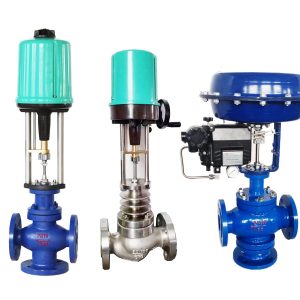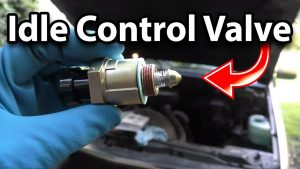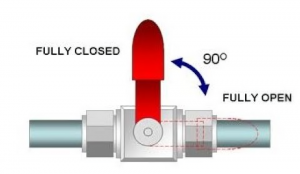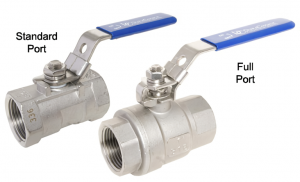Modulating control valves is crucial in various industries, including HVAC systems, manufacturing processes, and water treatment plants, as they allow for precise control of fluid flow rates, ensuring optimal performance and efficient operation. These valves are designed to modulate the flow, adapting to changing system conditions and maintaining desired setpoints. By understanding how modulating control valves work and their types, applications, advantages, and proper selection and maintenance techniques, one can effectively utilize these valves to enhance system efficiency and productivity.
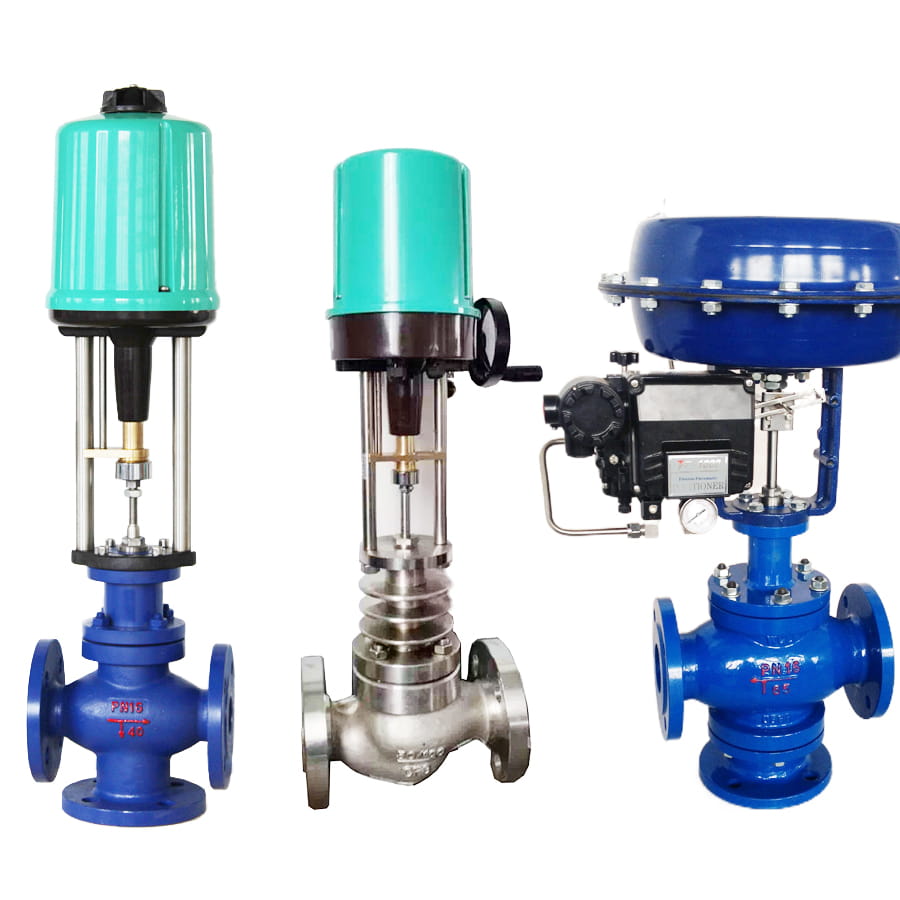
What Is a Modulating Control Valve
A modulating control valve is a valve that controls the flow of fluid in a system to maintain a specific process variable at a desired setpoint. Unlike on/off valves, which only have two positions, modulating valves can operate at any position between fully open and fully closed, allowing for precise control over the flow rate.
Components and Functionality of Control Valve
A modulating control valve has three main parts: an actuator, a valve body, and a positioner. The actuator moves the valve element (like a plug, disc, or ball) to control the flow. The positioner gets signals from a process controller and adjusts the actuator to keep the valve in the proper position to reach the desired setpoint.
Modulation Mechanism of Control Valve
Modulation in a control valve means that the valve can change the flow rate of a fluid or gas continuously. This is done by adjusting the valve opening based on feedback from the controlled process. Actuators in modulating valves can be powered by air, electricity, or hydraulic pressure. They use control signals (often 0-10 V DC or 4-20 mA) to adjust the valve position.
Types of Modulating Control Valves
There are several types of modulating valves, including:
Globe Valves: These valves offer good shut-off capabilities and are used for their ability to control the flow precisely.
Butterfly Valves: Known for their compact design and quick operation, suitable for large volume flows.
Ball Valves: These provide reliable sealing and are used for tight shut-off applications.
Applications and Industries Using Modulating Control Valves
Modulating control valves is essential in various industrial applications where precise flow control is necessary. They are commonly used in:
HVAC Systems: For regulating temperatures and managing airflow.
Water Treatment: To control the flow of water and treatment chemicals.
Oil and Gas Production: For managing the flow of oil and natural gas during processing and transportation.
Advantages of Using Modulating Control Valves
Modulating control valves offers several advantages for efficient flow control. They provide precise control over the flow rate, allowing for greater process accuracy and consistency. This leads to improved system performance and energy savings. Modulating control valves offers flexibility, which can be adjusted to meet varying requirements. Their automated operation reduces the need for manual intervention, saving time and improving productivity. With their ability to regulate flow, modulating control valves are a reliable choice for industries requiring precise systems and process control.
Efficiency and Energy Savings
Modulating control valves provides efficient flow control, improving energy savings and system performance. By regulating the flow rate, they optimize processes and reduce energy consumption. Automated control valves, whether on-off or modulating, offer even greater efficiency and safety. By automating the actuator, precise control results in energy savings and better output control. These valves are ideal for applications that require high precision, such as power plants, wastewater treatment, HVAC systems, and irrigation systems.
Precise Control and Flexibility
Precise control and flexibility are key advantages of using modulating control valves. These valves allow for accurate adjustment of flow rates, ensuring optimal process control. Additionally, they offer the flexibility to adapt to changing operating conditions, making them versatile for various applications. To achieve precise control and flexibility, selecting the correct type of modulating control valve and properly sizing it for the system requirements is essential. Regular maintenance and calibration also contribute to maintaining the desired level of control and flexibility.
Selection and Sizing of Modulating Control Valves
Selection and sizing of modulating control valves are crucial to ensure optimal performance. Factors such as the required flow rate, pressure drop, and temperature must be considered when selecting a valve. Proper sizing is essential to match the valve’s capacity with the system requirements. Consulting manufacturers’ technical data and seeking expert advice can help make the appropriate selection and sizing decisions. Regular evaluation and adjustment of control settings can also optimize performance over time.
Factors to Consider When Selecting Modulating Control Valves
Several factors should be considered when modulating control valves to ensure optimal performance. These include the fluid characteristics, such as viscosity and corrosiveness, and the system’s anticipated flow rate and pressure range. The appropriate valve material and design should be chosen based on these parameters. Factors like control stability, ease of design, ease of operation, and cost should also be considered during the selection process. You can choose the suitable modulating control valve for your specific application by carefully considering these factors.
Proper Sizing for Optimal Performance
Proper sizing is crucial for achieving optimal performance in control valve systems. To ensure accurate control, the valve must be sized appropriately based on the flow rate, pressure, and other system parameters. Undersized valves can cause excessive pressure drops and poor control, while oversized valves may lead to instability and reduced efficiency. Selecting the right valve size can enhance control accuracy, minimize energy consumption, and optimize system performance. It is recommended to consult valve sizing guidelines or work with experienced professionals to determine the proper valve size for your specific application.
Installation and Maintenance of Modulating Control Valves
Installation guidelines for modulating control valves involve several steps:
- Ensure proper positioning: Install the valve in a way that allows easy access for maintenance and repair. Position the valve vertically or at the necessary angle for efficient flow regulation.
- Secure the valve: Use appropriate mounting hardware to fasten the valve to the pipeline or equipment. This ensures stability during operation and prevents leaks or vibrations.
- Connect the actuator: Attach the actuator to the valve body, ensuring proper alignment and tight connections. Follow the manufacturer’s instructions for electrical and pneumatic connections.
- Calibrate the valve: Once installed, calibrate the valve by setting the zero and span values. This involves adjusting the control signal to correspond with the desired flow rate.
Maintenance tips to ensure the longevity of modulating control valves include:
- Regular inspections: Inspect valves and actuators for any signs of wear, leakage, or damage. Replace any faulty components to maintain optimal performance.
- Lubrication: Apply lubricants to valve stems and other moving parts to reduce friction and enhance smooth operation. Follow the manufacturer’s recommendations for lubrication intervals and types of lubricants.
- Cleaning: Remove any debris or buildup affecting the valve’s performance. Use appropriate cleaning agents and tools to thoroughly clean without damaging the valve or its components.
- Periodic testing: Regularly test the valve’s response to control signals to verify its accuracy and functionality. Adjustments or recalibrations may be necessary to maintain precise control.
By following proper installation procedures and implementing regular maintenance practices, you can ensure the efficient operation and longevity of modulating control valves.
Installation Guidelines for Modulating Control Valves
To install a modulating control valve, position it vertically or at the necessary angle for efficient flow regulation. Secure the valve with appropriate mounting hardware, and connect the actuator following the manufacturer’s instructions. Calibrate the valve by setting zero and span values to correspond with the desired flow rate. Remember to inspect the valve and actuator for wear or damage regularly, lubricate moving parts, clean debris, and periodically test the valve’s response to control signals for accurate functionality.
Maintenance Tips to Ensure Longevity
Proper maintenance is crucial for ensuring the longevity of modulating control valves. Here are some practical tips to keep your valves in top condition: 1. Inspect valves for wear, leaks, or corrosion. 2. Keep valves clean by removing dirt and debris. 3. Monitor valve performance by measuring flow rates and pressure differentials. 4. Lubricate moving parts as recommended by the manufacturer. 5. Test the valve’s response to control signals periodically. By following these tips, you can enhance the reliability and lifespan of your modulating control valves.
In Conclusion
Modulating control valves is indispensable across various industries, and it is crucial in managing fluid dynamics with precision. These valves can adjust flow rates seamlessly to match ever-changing operational demands, thus ensuring systems operate at their peak. The detailed discussion of the different types of valves, their applications, and their benefits—particularly in sectors like HVAC, water treatment, and oil and gas—highlights just how critical these components are.
Choosing the correct valve and size, along with committing to regular maintenance, not only boosts efficiency and conserves energy but also prolongs the life of the valves. By following recommended installation practices and keeping up with maintenance—checking, cleaning, and calibrating as needed—industries can fully harness the capabilities of modulating control valves. This approach enhances reliability and productivity, proving that these valves are more than just hardware; they are central to more intelligent, sustainable industrial operations.






